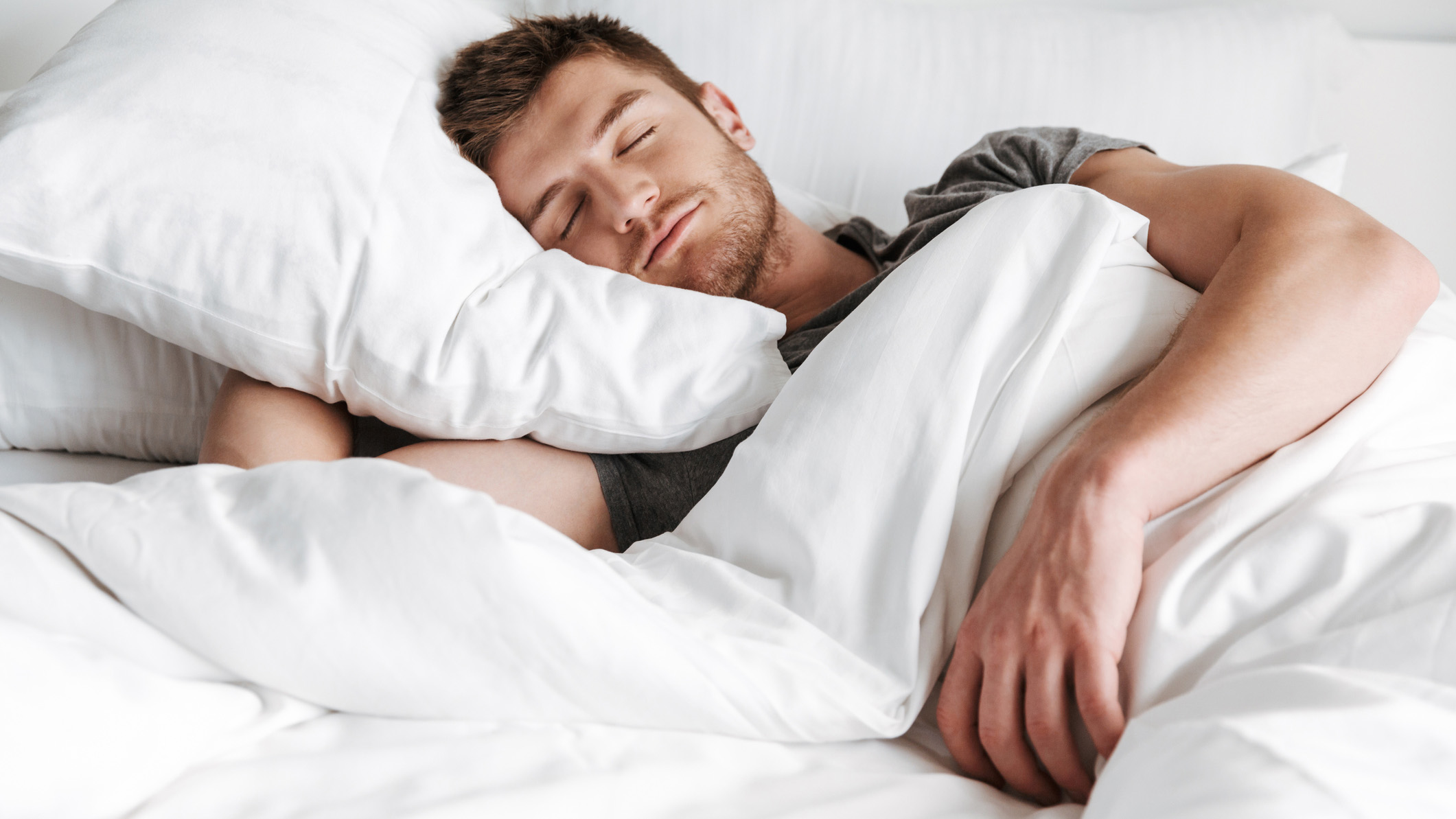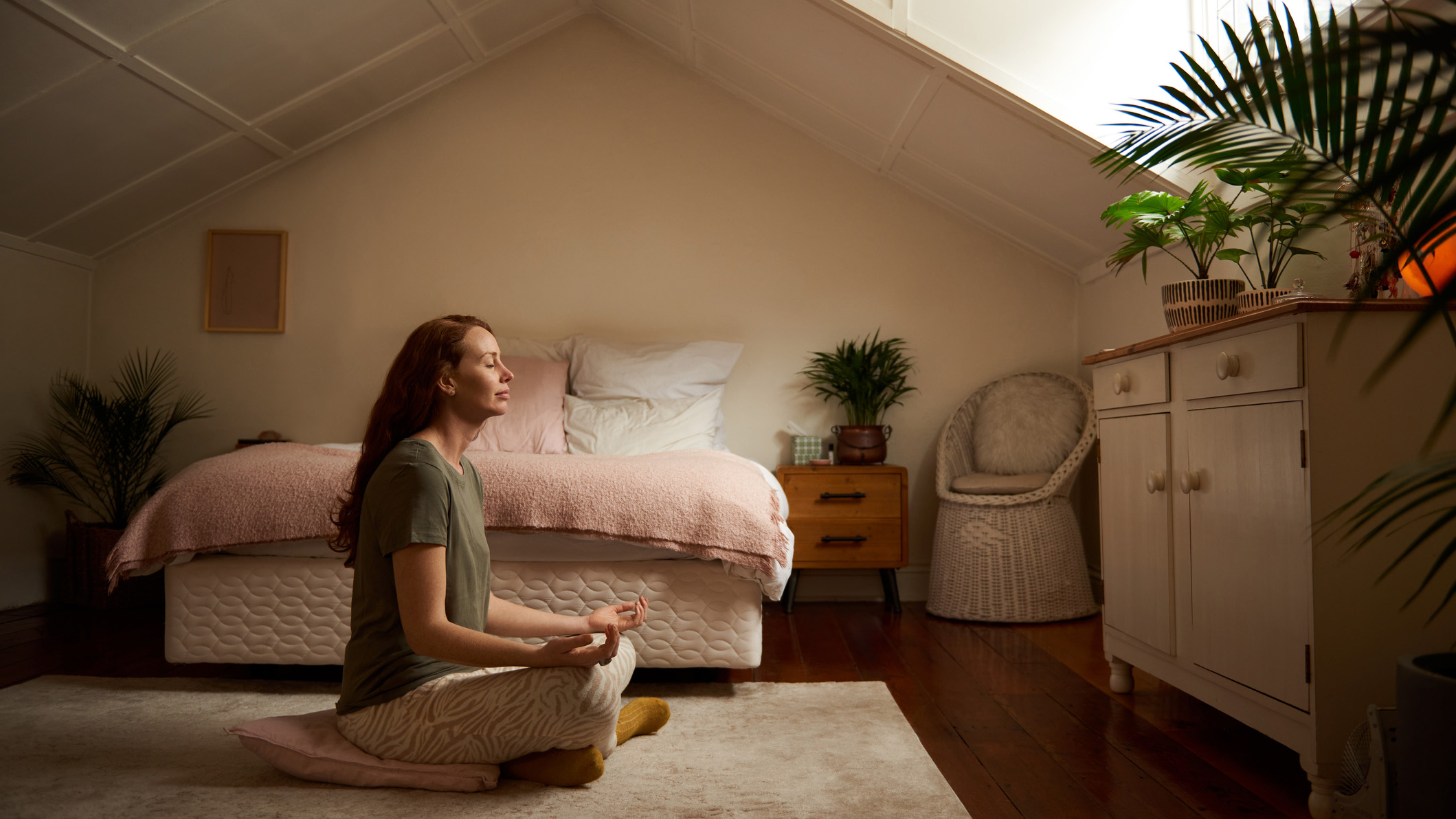
If you’re having trouble sleeping, your mind is whirring and you want an easy yet powerful breathing technique to help you fall asleep fast, then it’s time to get familiar with the 4 7 8 sleep method.
This popular sleep trick was developed by Dr Andrew Weil, Founder and Director of the University of Arizona Center for Integrative Medicine. Dr Weil described the 4 7 8 sleep method as “a natural tranquilliser for the nervous system”. Sounds good, right?
While some people are turning to melatonin gummies to help them fall asleep fast, others are using the Relaxing Breath, which is one of three breathing techniques recommended by breathwork expert Dr Weil. Here’s it works, and how it can help you fall asleep faster and curb stress and night time anxiety…
How does the 4 7 8 sleep method work?
When talking about the 4 7 8 breathing technique, Dr Weil explained how, “this exercise is subtle when you first try it, but gains in power with repetition and practice.”
The 4 7 8 sleep method works by activating your parasympathetic nervous system (PSNS). Psychologists describe the PSNS as the system responsible for rest and relaxation, and for switching off the sympathetic nervous system (SNS) – the one that kick-starts your stress response and ‘fight or flight’ mode.
Through deep, rhythmic breathing, this powerful technique helps you fall asleep faster while reducing any anxiety and stress you might be feeling. Here’s how to use it tonight…

How to use the 4 7 8 sleep method
First things first, you need to practice this breathing technique twice a day every day. Just like the military sleep method, the 4 7 8 sleep method increases in power the more you use it.
Secondly, if you have asthma or a respiratory condition, speak to your doctor first to make sure this breathing technique is safe for you to use. Ready to start? Then here’s how to use the 4 7 8 sleep method tonight…
1. Get into a comfortable position and relax your body.
2. Place the tip of your tongue against the tissue behind your upper front teeth.
3. Exhale through your mouth, making a whooshing sound.
4. Close your mouth and inhale through your nose for 4 seconds.
5. Now hold your breath for 7 seconds.
6. Exhale fully through your mouth for 8 seconds, making a whooshing sound as you breathe out.
7. That counts as one cycle of breath. Repeat this cycle 3-4 times, twice a day.
If you find it hard to hold your breath for that long to begin with, you can speed up the count in the beginning as long as you stick to the 4:7:8 ratio per breath.
It may take four to six weeks to notice any big changes, but with twice-daily practice you’ll soon be falling asleep faster and feeling more peaceful when drifting off.
And if you wake up often at night, you can also use the 4 7 8 sleep method to get back to sleep quickly. Here’s Dr Weil on how to use this breathing technique and what it sounds like when you do it right:
How does deep breathing help us fall asleep fast?
Deep breathing is a natural sleep aid and, best of all, it’s completely free and easy to do. Research has shown that it can be effective for people with insomnia, and how slow, deep breathing – especially when used with sleep hygiene techniques – can help people initiate sleep faster.
Deep breathing is also one of the best ways to quickly lower stress in the body as, according to guidance shared by the University of Michigan Health, ‘it sends a message to your brain to calm down and relax. The brain then sends this message to your body.’
The 4 7 8 sleep method takes no time to practice, so try it twice a day for the next four to six weeks and see how it benefits your sleep. If you have any concerns about your quality of sleep though, speak to your healthcare professional to see what help is available to you.
Also, don’t forget that your bed can impact how well you sleep, so make sure you have the best mattress for your body. If you aren’t ready for a new mattress just yet but your bed needs a big comfort boost, try a thick mattress topper instead. Both are seeing price cuts thanks to the incoming Presidents’ Day mattress sales.







